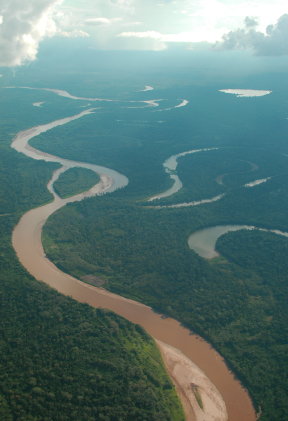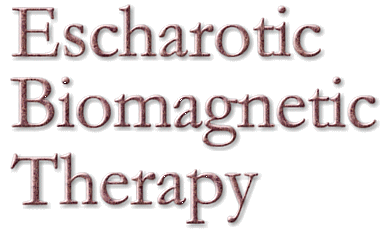
A New Proposed Experimental Modality
by Greg Caton, Medical Researcher
Carolina Duran, M.D.
Background
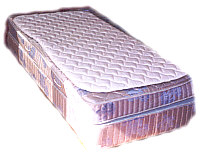
 ometime in 2002, Alpha Omega Labs introduced a
new line of products called North Polarity Magnetic Health Products,
which made use of the well-established, therapeutic properties of bed covers that
contained low-gauss magnetic force values. (This line of products was
discontinued after the U.S. FDA destroyed the
lab and all inventory in 2003). ometime in 2002, Alpha Omega Labs introduced a
new line of products called North Polarity Magnetic Health Products,
which made use of the well-established, therapeutic properties of bed covers that
contained low-gauss magnetic force values. (This line of products was
discontinued after the U.S. FDA destroyed the
lab and all inventory in 2003).
 Alpha Omega Labs is best known for having
pioneered
the use of escharotic medicine on the internet when it opened online in September, 1995, although
its roots go back to 1990. In over twenty years of working with the public, Alpha Omega Labs been
able to demonstrate that escharotics appear to work (based stricly on anecdotal inputs) in over 99% of all
cases of skin cancer and with a very large percentage of internal cancer cell types. (A perusal of
"anecdotal cases" can be found in a "testimonial section" of its historic
and historical site, Altcancer.com. Alpha Omega Labs is best known for having
pioneered
the use of escharotic medicine on the internet when it opened online in September, 1995, although
its roots go back to 1990. In over twenty years of working with the public, Alpha Omega Labs been
able to demonstrate that escharotics appear to work (based stricly on anecdotal inputs) in over 99% of all
cases of skin cancer and with a very large percentage of internal cancer cell types. (A perusal of
"anecdotal cases" can be found in a "testimonial section" of its historic
and historical site, Altcancer.com.
 Unless targeted cancer growths are "small" -- (for
which an exacting definition cannot be provided because of other contributing factors, which
will soon become apparent) -- pain management is an integral part of even a cursory study
of escharotic medicine. A pain management guide
for using AO Lab's flagship product, Unless targeted cancer growths are "small" -- (for
which an exacting definition cannot be provided because of other contributing factors, which
will soon become apparent) -- pain management is an integral part of even a cursory study
of escharotic medicine. A pain management guide
for using AO Lab's flagship product,
|
 To U.S. Users: To U.S. Users: This product
have not been evaluated by the U.S. Food & Drug Administration.
It is not intended to diagnose, treat, cure, or prevent any disease.
|
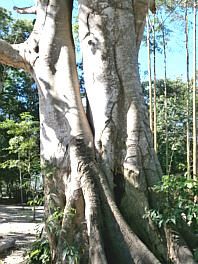
 Two stately specimens of
Oje taken in Pucallpa, Peru.
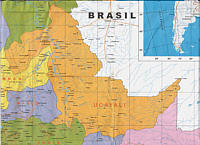 Sourcing From
Sourcing From
The Peruvian
Amazon
 All the materials used to
make our Oje are wild-crafted from sources in
the Ucayali Region of Peru.
Dosages &
Ethnobotanical
Usage
 Duke, quite predictably,
provides a "food farmacy potential" score for this plant of, "FNFF=!" ("Survival
food or little known but locally important; not in U.S. supermarkets.")
Fruit edible (DLZ, IED).
- Bolivia: Apply latex to sores of the lip and mouth; to wounds as antiseptic
and cicatrizant; to take root decoction for gastric ulcers (DLZ).
- Peru: Among the Madre de Dios Peruvians, they use the latex as a vermifuge (MD2),
like most ethnic groups from Bolivia to Central America. In broader numbers of ethnic groups
in Peru, the latex of Oje is used to treat stingray stings and snake bites (MD2).
- Nicaragua: The Garifuna apply the sap infusion or poultice orally or topically
for aches, pains, and dyspepsia (IED).
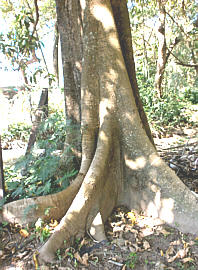
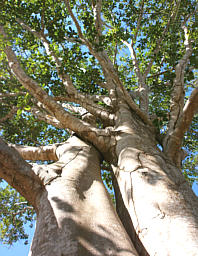
|


 ometime in 2002, Alpha Omega Labs introduced a
new line of products called North Polarity Magnetic Health Products,
which made use of the well-established, therapeutic properties of bed covers that
contained low-gauss magnetic force values. (This line of products was
discontinued after the U.S. FDA destroyed the
lab and all inventory in 2003).
ometime in 2002, Alpha Omega Labs introduced a
new line of products called North Polarity Magnetic Health Products,
which made use of the well-established, therapeutic properties of bed covers that
contained low-gauss magnetic force values. (This line of products was
discontinued after the U.S. FDA destroyed the
lab and all inventory in 2003).



